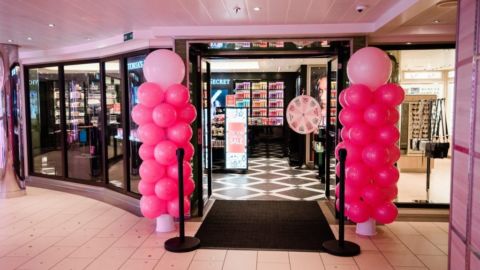 When it’s placed alongside more concrete assets like real estate, on-hand inventory and a healthy marketing budget, “corporate culture” can seem like a wimp. Certainly it’s nice to have a positive corporate culture, but what does it really add to the bottom line?
When it’s placed alongside more concrete assets like real estate, on-hand inventory and a healthy marketing budget, “corporate culture” can seem like a wimp. Certainly it’s nice to have a positive corporate culture, but what does it really add to the bottom line?
Let’s look at it another way: how harmful is a negative corporate culture? The answer is: a lot. And Steven Blue, President and CEO of Miller Ingenuity and a recognized expert in business transformation and innovation, says (in effect) that the fish stinks from the head — that it’s the CEO’s job to create a positive corporate culture, and it’s his or her fault if that culture becomes toxic.
Think about companies that have been in the news for all the wrong reasons in recent months. Wells Fargo, Uber, United Airlines and most recently The Weinstein Company. Even if the connection between a CEO’s misdeeds and their impact on the companies they lead isn’t always as direct as in this last example, it’s always there to some extent.
Advertisement
In an interview with Retail TouchPoints, Blue provided guidance on just how critical the CEO’s role is, and why some retailers may need a corporate culture makeover ASAP:
Retail TouchPoints (RTP): How important a role does the CEO play in creating a corporate culture?
Steven Blue: It’s huge. The culture cannot exist unless the CEO wants it to exist, and nobody else in the organization can make it happen. The problem is that a lot of CEOs think ‘culture’ is the squishy pizza-and-beer lunch they offer their employees. A lot of my job is convincing CEOs that culture is worth paying attention to. We use case studies that show a company’s financial performance is tied to a positive culture.
RTP: In the retail industry, how important is it for companies to have a positive corporate culture?
Blue: The connection between corporate culture and the ultimate consumer is stronger in retail than in almost any other industry. That’s because in retail, the culture is touching lots of different people at multiple levels.
I’ll give you an example of where many retail organizations go wrong culturally. A few years ago I was shopping with my 22-year-old daughter for purses. We were approached by a clerk and he showed us all the high-end products. We said, ‘Let us think about it,’ left and then came back and started looking at another purse. We got swarmed by another clerk and the one who had talked to us before, and they both started arguing over who had the right to talk to us. I know that retailers incentivize their people for individual sales, but we were disgusted by their fight and didn’t buy anything. That retailer could have avoided this culturally by incentivizing the two clerks as a team and eliminating the rivalry. In this case, poor culture meant they lost a sale — and how many other sales did they lose that day, month or year because of that kind of behavior?
RTP: What are some of the key signs that a corporate culture has toxic elements?
Blue: One is the pursuit of profit at all costs. I’m a capitalist, I run a for-profit business, but when businesses like Wells Fargo and Uber send the message of ‘profit no matter what’ to their employees, people do strange things. They lie, they conceal facts from each other. If you’re incentivized solely to make the numbers, it ends up being a dog-eat-dog world and people start cooking the books.
Toxic cultures lack integrity, and integrity has to start at the top. You can chase a profit but do so with integrity, compassion, caring and honesty. At my company, Miller Ingenuity, a core principle is integrity. We would fire people if they fudged the numbers, and they know that that’s what would happen to them.
I’ll give you an example. We have big banners hanging from the ceiling in our factory about integrity and our core values. I owned a cherry-red 1968 Mustang and the first winter I had it, I didn’t want to leave it in my own garage, so I thought I would store it in my company’s warehouse. I was walking back through the factory to say to the manager ‘Make room for my Mustang’ and the integrity banner hit me like a sledgehammer. Would a CEO with integrity put a personal asset within a company space? Is that right? I ended up storing the car with my plumber, who collects classic cars. (The other message of this story is that I’m paying my plumber too much money.)
RTP: What is a common misstep CEOs make when they try to improve the culture at their company?
Blue: A big mistake people often make is to say, ‘I want a culture that values teamwork.’ I would ask: ‘Why do you want teamwork?’ The point is that culture is not an end in itself, it’s only a means to achieve better performance. The endgame is to make the organization a finely tuned high-performance machine.
RTP: You’ve spoken about a ‘culture by design’ as opposed to a ‘culture by default.’ Why is a culture by design better?
Blue: A culture by design means you’re not just floundering around in the marketplace, but that you have a plan. Cultures by design are positive because they contribute to the overall mission of the organization. Cultures that are not designed detract from it. If you don’t get the culture right, at best you’re sub-optimizing your performance. At worst the culture can become toxic, and toxic cultures destroy companies all the time — and they destroy small ones faster and more effectively than big ones.















